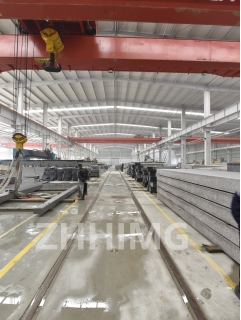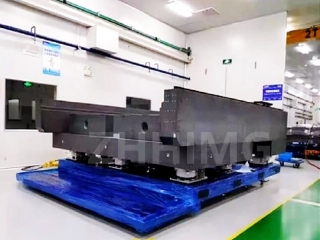In the field of high-end metrology, accuracy is the core criterion for measuring the value of equipment. In recent years, 95% of high-end metering equipment has abandoned traditional cast iron bases and instead adopted granite bases. Behind this industry transformation lies the technological breakthrough brought about by the nano-level damping characteristics of granite bases. This article will deeply analyze the unique advantages of granite bases and uncover the mystery behind their becoming the "new favorite" of high-end metering equipment.
The limitations of cast iron bases: It is difficult to meet the high-end metering requirements
Cast iron was once the mainstream material for the base of measuring equipment and was widely used due to its low cost and easy processing. However, in high-end measurement scenarios, the limitations of cast iron are becoming increasingly prominent. On the one hand, cast iron has poor thermal stability, with a thermal expansion coefficient as high as 11-12 ×10⁻⁶/℃. When the equipment generates heat during operation or the ambient temperature changes, it is prone to thermal deformation, resulting in the deviation of the measurement reference. On the other hand, the internal structure of cast iron has microscopic pores, and its vibration damping performance is insufficient, making it unable to effectively absorb external vibration interference. When the operation of machine tools and the movement of vehicles in the workshop generate vibrations, the cast iron base will transmit the vibrations to the measuring equipment, causing fluctuations in the measurement data and making it difficult to meet the high-precision measurement requirements at the nanometer and micrometer levels.

Nanoscale damping characteristics of granite bases: The core guarantee for precise measurement
Granite is a natural stone formed through geological processes over hundreds of millions of years. Its internal mineral crystals are compact and its structure is dense and uniform, endowing it with outstanding nano-scale damping properties. When external vibrations are transmitted to the granite base, its internal microstructure can rapidly convert the vibration energy into thermal energy, achieving efficient attenuation. Compared with cast iron, the vibration response time of granite bases is shortened by more than 80%, and they can return to a stable state in an extremely short time, effectively avoiding the impact of vibration on the measurement accuracy of measuring equipment.
From a microscopic perspective, the crystal structure of granite contains a large number of tiny grain boundaries and mineral particles, and these structural features form a natural "vibration absorption network". When the vibration waves propagate within the granite, they will collide, reflect and scatter with these grain boundaries and particles multiple times. The vibration energy is constantly consumed in this process, thereby achieving the effect of vibration damping. Studies show that the granite base can reduce the vibration amplitude to less than one-tenth of the original, providing a stable measurement environment for measuring equipment.
Other advantages of granite bases: Fully meeting high-end demands
In addition to its outstanding nanoscale damping properties, the granite base also has multiple advantages, making it an ideal choice for high-end metering equipment. Its coefficient of thermal expansion is extremely low, only 5-7 ×10⁻⁶/℃, and it is almost unaffected by temperature changes. It can maintain stable size and shape under different environmental conditions, ensuring the accuracy of the measurement reference. Meanwhile, granite has high hardness (with a Mohs hardness of 6-7) and strong wear resistance. Even after long-term use, its surface can still maintain a high-precision planar state, reducing the frequency of equipment maintenance and calibration. In addition, granite has stable chemical properties and is not easily corroded by acidic or alkaline substances, making it suitable for various complex industrial environments.
Industry practice has verified the outstanding value of granite bases
In the field of semiconductor manufacturing, the size of chips has entered the nanoscale era, and the precision requirements for metrology equipment are extremely high. After a well-known international semiconductor enterprise replaced the metering equipment with a cast iron base with a granite base, the measurement error decreased from ±5μm to ±0.5μm, and the product yield rate increased by 12%. In the aerospace field, high-end metrology equipment used for detecting the shape and position tolerances of components, after adopting granite bases, effectively avoids vibration interference, ensuring the processing accuracy of key components such as aircraft engine blades and fuselage frames, and providing a strong guarantee for the safety and reliability of aerospace products.
With the continuous improvement of the requirements for measurement accuracy in the high-end manufacturing industry, granite bases, with their nano-scale damping characteristics and comprehensive performance advantages, are reshaping the technical standards of measurement equipment. The shift from cast iron to granite is not merely an upgrade of materials; it is also an industry revolution that propelling precision measurement technology to new heights.
Post time: May-13-2025

